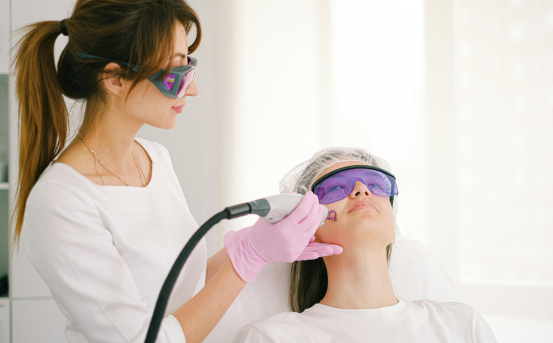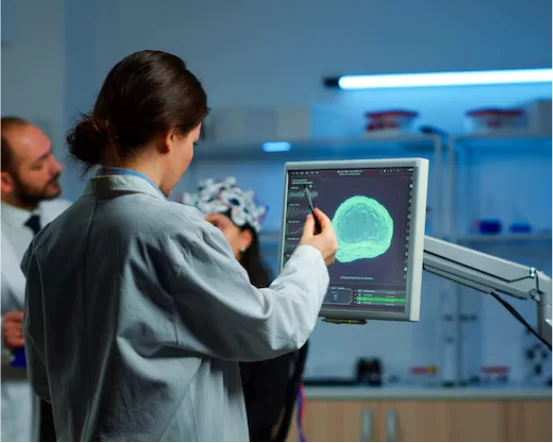Subcision for acne scars treatment is a popular and effective minimally invasive dermatological procedure used to treat depressed acne scars, especially rolling scars. However, like any cosmetic procedure, subcision requires a proper medical diagnosis and evaluation before proceeding. Understanding the diagnostic process helps ensure the treatment is appropriate for your scar type, skin condition, and overall health.
Acne scars can significantly impact a person’s self-esteem and overall confidence, often lingering long after the active acne has healed. Among the various treatment options available for depressed or atrophic scars, subcision has emerged as one of the most effective solutions particularly for rolling acne scars. Subcision is a minor surgical procedure that releases the fibrous bands tethering the skin down, allowing the scarred area to lift and smooth out over time.
Understanding Acne Scars: Types and Causes
Before diving into the diagnosis for subcision, it’s important to understand the different types of acne scars. Acne scars develop when the skin’s healing process after severe acne is disrupted, leading to permanent changes in skin texture and appearance.
Common Types of Acne Scars :-
-
Rolling Scars :- These are shallow, wide scars with soft edges that give the skin a wave-like appearance. Subcision is particularly effective for this type.
-
Boxcar Scars :- Wider than icepick scars, with well-defined edges. These can sometimes be treated with subcision in combination with fillers or lasers.
-
Icepick Scars :- Narrow and deep, these are less responsive to subcision and may require other treatments like punch excision or TCA CROSS.
-
Hypertrophic or Keloid Scars :- Raised scars that are not suitable for subcision, as they involve excess collagen formation.
Why Diagnosis Before Subcision Matters?
The success of subcision heavily depends on correct scar type identification and skin analysis. A precise diagnosis :-
-
Ensures the patient is a good candidate for subcision
-
Identifies underlying issues like active acne or infections
-
Helps formulate a personalized treatment plan
-
Minimizes risks like excessive bleeding or post-procedure complications
-
Allows for combining subcision with other therapies for optimal results
Diagnostic Process Before Subcision
Detailed Medical History
The diagnosis starts with a comprehensive discussion about your health and skin history. This includes :-
-
Duration and severity of acne
-
Past acne treatments (topicals, oral medications, lasers, etc.)
-
History of scarring in the family
-
Allergies and medication use
-
Tendency for keloid formation
-
Any bleeding disorders or use of blood thinners
Your dermatologist uses this information to assess your overall suitability for the procedure and reduce the risk of adverse reactions.
Visual Skin Examination
A close visual inspection of the skin is the next step. The dermatologist examines :-
-
The type and depth of acne scars
-
Skin tone and texture
-
Distribution of scars across different facial areas
-
Presence of active acne or inflammation
Rolling scars are usually considered ideal for subcision due to their fibrous tethering beneath the skin. The dermatologist will gently stretch your skin to see if the scar disappears temporarily, which suggests that fibrous bands are pulling the skin downward making you a good candidate for subcision.
Palpation of Scars
In some cases, dermatologists perform gentle palpation (touch-based examination) to feel the tethering bands beneath the skin. These fibrous septae pull the scar down and create the uneven texture. Identifying these bands helps guide the direction and depth of subcision during treatment.
Photographic Documentation
Dermatologists often take high-resolution photographs under different lighting conditions (including side lighting or cross-polarized lighting) to document scar appearance, depth, and distribution. These images also serve as a reference point for tracking progress post-treatment.
Skin Type Assessment (Fitzpatrick Scale)
The Fitzpatrick skin typing system classifies skin based on its reaction to UV exposure. It ranges from Type I (very fair) to Type VI (very dark). Skin type plays an important role in predicting potential pigmentation issues after subcision, such as post-inflammatory hyperpigmentation (PIH).
Evaluation for Active Skin Conditions
Subcision for acne scars treatment is not recommended if you have :-
-
Active acne outbreaks
-
Ongoing skin infections (bacterial or fungal)
-
Severe rosacea or eczema
-
Active herpes lesions
These conditions must be treated first before undergoing any invasive dermatological procedure.
Allergy and Sensitivity Testing (If Fillers are Involved)
In many cases, subcision is combined with dermal fillers (like hyaluronic acid) to lift the skin and improve scar correction. If fillers are part of your treatment plan, your dermatologist may perform a patch test to rule out allergic reactions.
Blood Tests (In Special Cases)
Although not always required, blood tests may be recommended if :-
-
You’re on blood-thinning medication
-
You have a history of bleeding disorders
-
There’s concern about wound healing
Basic tests like CBC (complete blood count), PT/INR (clotting profile), and glucose levels help ensure your body can handle the procedure safely.
Psychological Evaluation (If Needed)
In rare instances, dermatologists may assess the psychological impact of acne scars, especially if the patient exhibits signs of body dysmorphic disorder (BDD). Setting realistic expectations is critical. Subcision offers improvement, not perfection.
Combining Subcision with Other Diagnostic Tools
To enhance outcomes, dermatologists often combine subcision for acne scars treatment with complementary treatments. Based on the diagnostic evaluation, your doctor may recommend :-
-
Micro needling or Radiofrequency Micro needling for skin remodeling
-
Laser Resurfacing for surface texture improvement
-
Platelet-Rich Plasma (PRP) therapy to boost healing
-
Dermal Fillers to support skin elevation after subcision
A proper diagnosis ensures the right combination of treatments is selected to give the best possible results.
What to ask your dermatologist before diagnosis for subcision for acne scars treatment?
Here are some important questions to ask during your diagnostic consultation :-
-
Am I a good candidate for subcision?
-
How many sessions will I need?
-
Will I need any combination treatments?
-
What are the potential risks or side effects?
-
How should I prepare my skin before the procedure?
Open communication ensures you’re well informed and comfortable before proceeding with the treatment.
Conclusion
Diagnosis for subcision for acne scars treatment is a powerful tool in acne scar treatment, but only when used appropriately. A thorough diagnosis is the foundation of a successful outcome. Identifying the right scar type, understanding your skin’s needs, and preparing properly will maximize the benefits of the procedure while minimizing risks.























